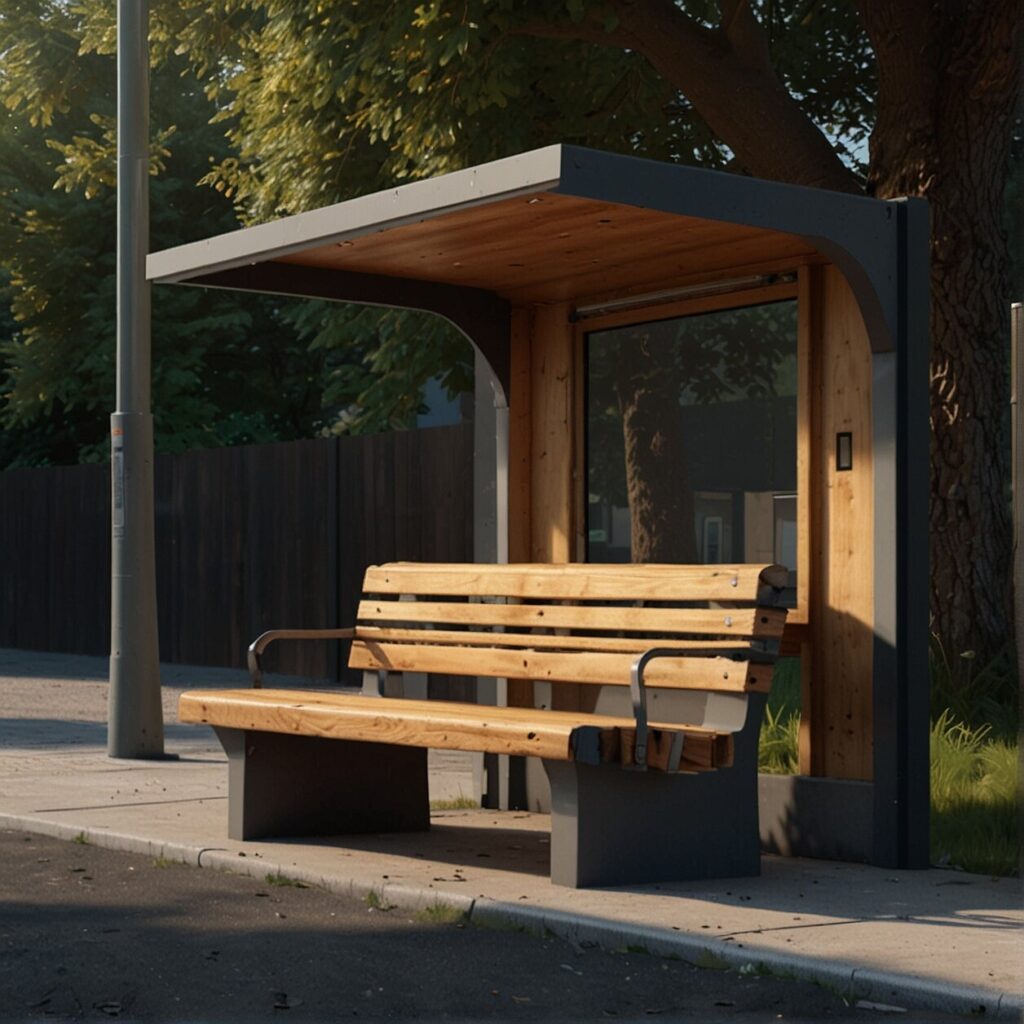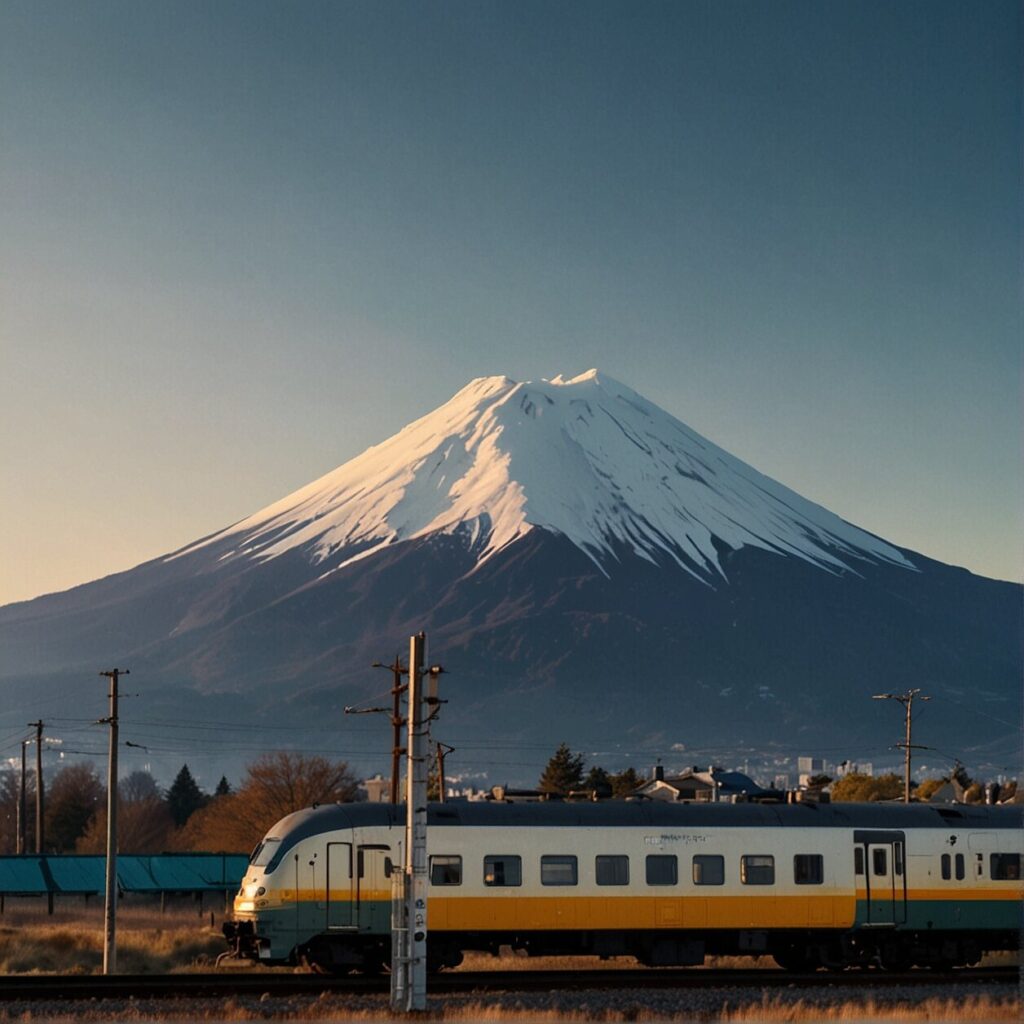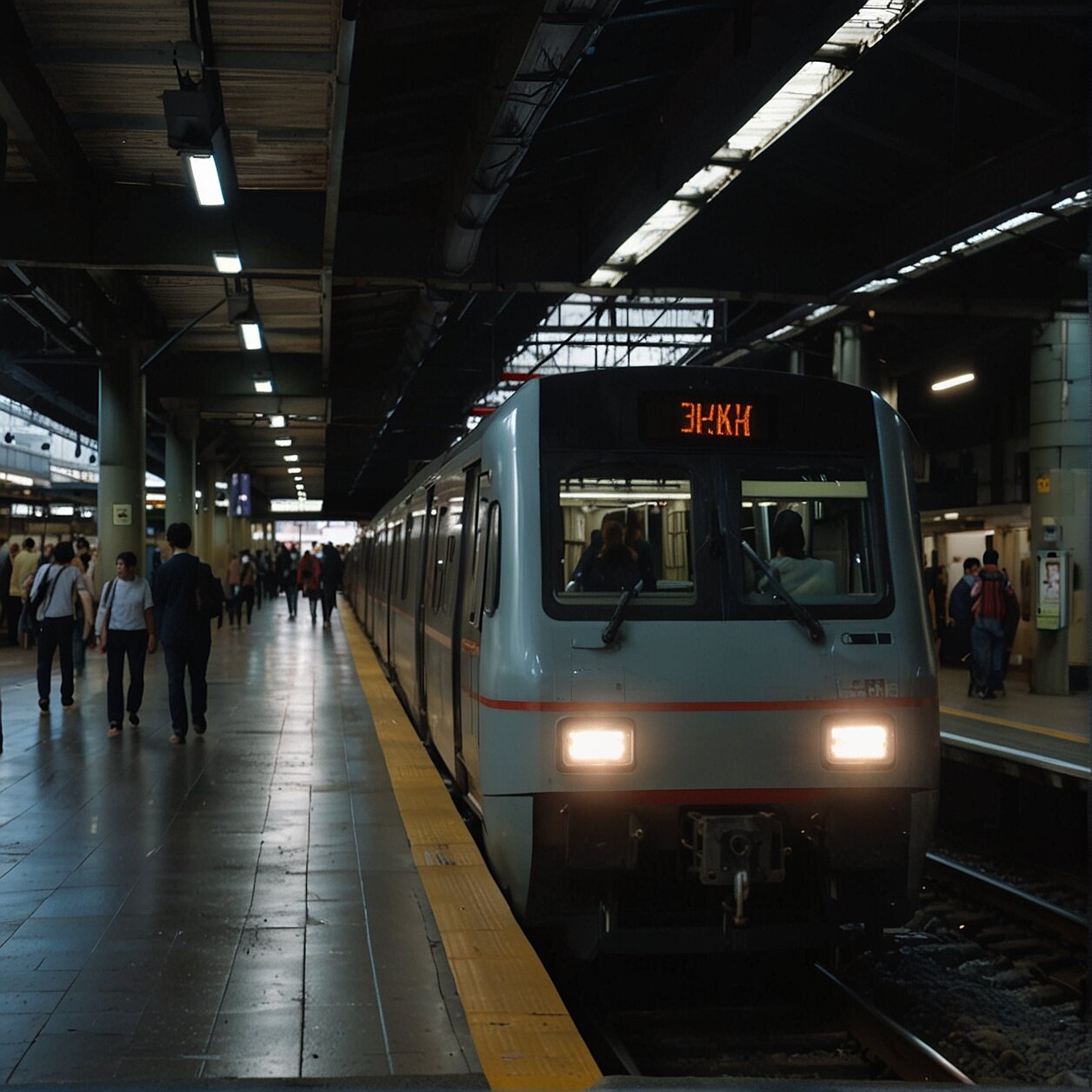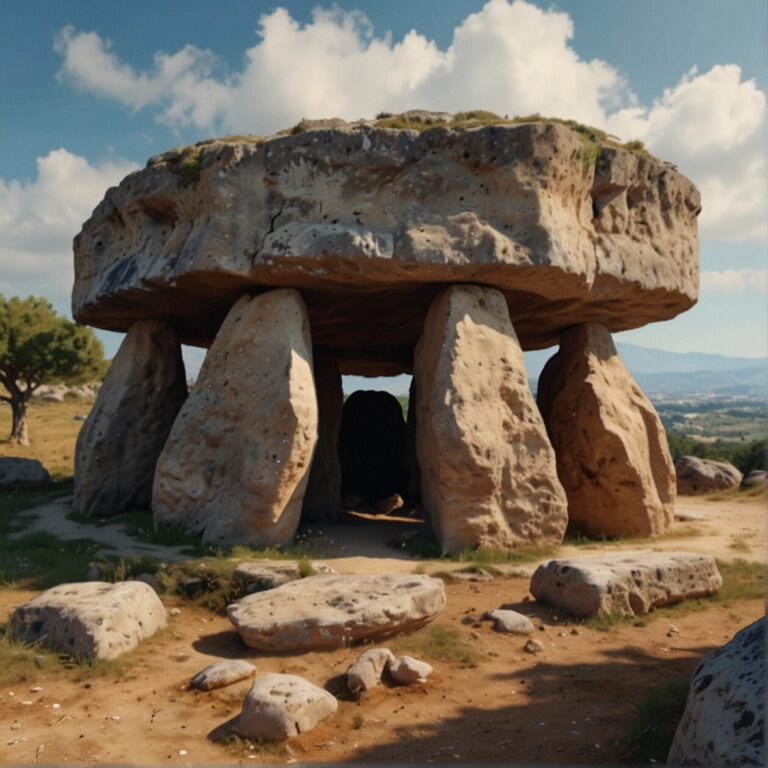Thrifty Adventure: Mastering Public Transportation
Ever stood at the heart of a bustling city, staring wide-eyed at a color-coded labyrinth sprawled across a transportation map? No worries, you’re not alone! Public transportation often appears as a daunting web of routes, times and stops, especially in unfamiliar territories. Yet, traversing the globe through its veins – the metros, buses, trams, and ferries – niftily bridges the chasm between being a tourist and experiencing a place authentically like a local. It’s not just a cheaper option but also a vibrant way of soaking in authentic flavors and quirks of a city.
“Travel is more than the seeing of sights; it is a change that goes on, deep and permanent, in the ideas of living.” – Miriam Beard
- Master getting around using public transit, whether you’re in New York or New Delhi.
- Discover cost-saving tips and sustainability benefits of public transportation.
- Learn how to appreciate the authenticity in commuting with the locals.
So, buckle up! We’re embarking on a journey to decode the realm of public transportation and offer you a compass to navigate it with ease and fun. Whether you’re a seasoned globetrotter or stepping off the plane in a foreign land for the first time, this guide has got your back.
Unlocking the Maze: Understanding Public Transportation Systems
Imagine standing on a bustling street corner in any major city in the world. In front of you runs an intricate network of buses, trains, trams, and more – a network that seems free of the usual confines of traffic jams and parking woes. Welcome to the world of public transportation, a maze that isn’t as daunting as it first appears, and one that can unlock a realm of possibilities and experiences like no other.
The key to understanding this transportation labyrinth lies in understanding its fundamental components. Public transportation systems differ from city to city, but they all essentially have a few common features: stops or stations, routes, and schedules. Stops are the set points where you can enter or exit the system, routes define the path these vehicles will follow, and schedules dictate when they will be at each stop.
Public transit provides freedom of mobility to everyone, regardless of age, ability or socio-economic status. This accessibility is one of its most significant advantages, especially as it facilitates access to essential needs later in life. Furthermore, public transportation encourages healthier habits by augmenting walking or cycling distances, while decreasing air pollution and reducing traffic crashes by taking more cars off the road.
What makes successful navigation of these systems crucial is the exponential increase in public transit use and the insatiable urban growth witnessed in recent times. With the Federal Aid Highway Act of 1956 emphasizing national highway networks, there has been a major shift to urban decentralization in the US. That, coupled with a global rise in public transport usage triggered primarily by socio-economic and environmental factors, calls for a stronger grasp on our public transportation networks.
As you unlock the features of public transport systems, you will inevitably uncover their inherent benefits that range from public health to household finances. Stay tuned as we delve deeper into these benefits and provide tips on how you can navigate public transit like a local.
Decode the Map: Tips for Navigating Public Transport Like a Local
Engaging with public transportation isn’t just about getting from point A to point B. It’s about embracing new experiences, navigating through the unknown, and stepping out of your comfort zone. When used correctly, public transportation can be an inviting labyrinth of discovery.
To navigate public transit like a local, keep these tips in mind:
- Explore various options: The world of public transportation is vast and vibrant. It’s not limited to buses and subways; it also encompasses streetcars, light rail, ferries, and more. Recent advancements even rope in the private sector with options like paratransit or ride-sharing. Take the time to explore the richness and diversity on offer.
- Keep updated with schedules: Public transit systems usually operate on strict timetables to ensure efficiency. The American Public Transportation Association (APTA) provides a comprehensive coverage of various public transportation schedules. Keep tabs on these to maximize your transit experience.
- Be mindful of transit etiquette: Each transportation system may have its own set of unwritten rules like giving up seats for seniors, pregnant women, or the disabled. Additionally, be considerate of others, avoid eating in vehicles, and try to keep noise levels low.
- Embrace the walk: Users of public transportation typically integrate some physical activity into their day by walking to and from transit stops. If you are someone who appreciates a healthy lifestyle, think of it as an added perk.
- Utilise tech tools: In this digital age, technology can be your best companion. For example, The CDC Foundation has published a Public Health Action Guide, which is a great tool for anyone looking to team up with transportation agencies to improve public transport systems.
- Embrace the freedom of mobility: Public transit systems give everyone the power to navigate a city or country, irrespective of individual mobility constraints. It empowers you to explore at your own pace, and according to your own interests.
Master these tips and you’ll be navigating any public transit system like a local before you know it!

Your Wallet’s Best Friend: The Cost-Effectiveness of Public Transport
Imagine for a moment that you have an incredible friend who’s on a mission to save you money. Lots of it. Not only that, but this friend is also willing to help you reduce your carbon footprint, encourage you to embrace healthier habits, and spare you the hassle of daily trips to the gas station. Surprise! You already have that friend in public transportation.
Let’s talk about numbers. To draw a clear picture of public transportation’s cost benefits, consider this: every $1 invested in public transport could yield a whopping $5 in economic returns, according to transportation researchers. Furthermore, making use of public transit instead of operating a private vehicle can save households approximately $6,251 annually. That’s not just pocket change—it’s substantial savings that can significantly impact your household budget.
It’s also worth noting that each family that manages to ditch one car in favor of public transit saves an astonishing $10,000 per year. Such savings provide a much-needed financial breather and a fantastic opportunity to invest those savings elsewhere—be it your child’s college fund, a down payment for a house, or even a dream trip.
Additionally, public transportation is a powerhouse of job creation and economic growth. By providing an affordable and efficient travel option, it enables and diversifies job market accessibility, enhancing the overall economy by supporting job commuters and customers alike.
In short, the cost-effectiveness of public transportation is undeniable. With its potential to save households thousands of dollars annually, provide economic growth opportunities, and foster healthier lifestyle habits, public transit indeed plays the part of your wallet’s best friend.
Travel on a Shoestring: Budget-Friendly Public Transportation Hacks
When it comes to smart budgeting while travelling, choosing public transportation is a powerful move. With careful planning and some savvy, you can significantly reduce your travel expenses and simultaneously immerse yourself in the local culture. Here are some savvy hacks that will help you achieve that:
Maximize the Use of Weekly or Monthly Passes
Instead of buying individual tickets every time you hop on a bus or train, consider purchasing weekly or monthly passes. In many cities, these passes offer unlimited rides within the specified period, a strategy that can save you a considerable amount of money, especially if public transportation is your primary mode of travel.
Take Advantage of Off-Peak Discounts
Some cities offer discounted fares during off-peak hours. If your schedule is flexible, you can save money by avoiding rush-hour travel. Not only will this approach save you money, but it will also allow you to enjoy a less crowded journey.
Use Fare Calculators
Public transportation systems typically have fare calculators on their websites. Use this tool to help budget your transportation costs accurately. They also help you figure out the most economical ticket or pass to purchase based on your travel needs.
Try Park-and-Ride Facilities
If you can’t completely do without your car, look out for park-and-ride facilities. These allow you to drive the first part of your journey, park your car for free, or a nominal charge, and then use public transport. This strategy could save you a significant amount on parking and fuel expenses in the city.
Leverage Smartphone Apps
Many public transportation systems have user-friendly apps that provide real-time updates, maps, and schedules. These apps often feature a ticket booking function, eliminating the need to carry cash or struggle with foreign currency if you’re abroad.
Remember, every dollar saved while using public transport adds up, potentially leaving you with enough for that extra side adventure, a special meal or a memorable souvenir. More than just a cost-saving tool, public transportation is your ticket to true, authentic experiences in the cities you explore.

The Green Choice: Environmental Benefits of Opting for Public Transit
It’s time you became part of the solution and not the problem. You see, every time you choose public transportation over private vehicles, you contribute to decreasing the carbon footprint. Public transit helps us reduce gas usage and pollution, leading to improved air quality for everyone. Deciding to jump on a bus or subway train might seem like a small step, but collectively, these choices can make significant environmental changes.
Take a moment to reflect on this – According to the American Public Transportation Association, public transportation can reduce carbon dioxide (CO2), a primary greenhouse gas, by up to 37 million metric tons annually. It’s quite astonishing, right? This reduction helps combat climate change and conserves our precious energy resources.
In addition to this, public transport indirectly promotes healthier habits such as walking or cycling to and from stations or stops. In an age where sedentary living is the new normal, these small bursts of physical activity contribute to better overall health. Moreover, note that using public transit often means reduced stress levels. Imagine yourself sitting comfortably, reading, or listening to music on your way to work instead of being stuck in traffic and dealing with road rage!
Public transit isn’t just about cramming yourself into a subway car during rush hour. It’s about making choices that positively affect society and the entire planet. It’s a green choice, the right choice. So next time you plan a journey, why not consider taking the bus, train, or metro? You’d be surprised at the difference it makes!
FAQ’S
And now, for some of the most common inquiries that come up when considering public transportation. This Frequently Asked Questions (FAQs) section unravels some of the complexities and uncertainties you may have about public transportation. We’ve curated the top questions that both rookies and pro commuters often ask, allowing you to deepen your understanding and further harness the power of the world’s various public transit systems. Ready? Let’s jump in.
How can I find the best public transportation routes?
Embarking on a journey in a new city can feel like a maze. Fret not, as finding the best public transportation routes is much easier than you might think. Plenty of resources are available to guide you on this adventure, ensuring you get from point A to point B smoothly.
Leveraging digital resources can turn travel planning into a breeze. Numerous online tools and mobile applications offer real-time directions and updates about potential travel disruptions. Be sure to look out for transit planner apps or official transportation websites before your journey commences. For instance, Google Maps and Citymapper have excellent features specifically tailored towards public transit – simply enter your start and end locations, choose ‘public transport’ as your preferred mode, and voila – the best route is served!
Another valuable resource is the American Public Transportation Association (APTA), which provides comprehensive information on public transportation, including bus, rail, trolleys, and more across the United States.
Lastly, don’t hesitate to ask locals for advice. They can often provide you with invaluable insights that can’t be found in a guidebook or online. From hidden shortcuts to avoiding peak-hour traffic – local knowledge can prove to be your secret weapon in navigating public transit like a pro.
Remember, the best route is not just about the shortest or quickest but also considers factors such as convenience and scenery. Enjoy the journey and not just the destination, and you might stumble upon hidden gems in the city!
Can using public transportation enhance my travel experience?
Indeed! Embarking on journeys via public transportation can greatly enhance your travel experiences. It offers a unique insight into the life and culture of the places you visit. Instead of isolating yourself in a car or taxi, you’re in the midst of the hustle and bustle, sharing space with local residents going about their daily life.
Thriving on public transportation can also make you feel more connected to the city and its inhabitants. It gives you the chance to taste the real essence of the city, its people, and their lifestyle. Besides, it’s a golden opportunity to go beyond the standard sights and explore lesser-known, local-beloved spots that aren’t always on the tourist trail.
Moreover, using public transportation can often be less stressful than renting a car and navigating unfamiliar roads and traffic rules. Plus, you can sit back, relax and take in the scenery instead of worrying about where to park. Altogether, opting for public transportation can transform your travel experiences from stress-induced sightseeing trips into enjoyable, authentic, and enriching journeys.
How safe is it to use public transportation?
Sure, you’re undoubtedly concerned about safety on public transportation. Rest assured, commuting on these shared transit systems is significantly safer than driving an automobile. In fact, traveling by public transportation is considered 10 times safer per mile compared to commuting by car. This impressive statistic reveals that choosing public transit can drastically reduce your chance of being involved in an accident by over 90%.
Moreover, studies have found that buses in particular are safer than individual vehicles. They are built to withstand impact and protect passengers. Bus-related accidents have one-twentieth the passenger fatality rates of automobile travel. No matter how you slice it, from a safety standpoint, public transportation comes out on top.
And it’s not just about personal safety; using public transportation can lead to safer communities as well. When proper transit options exist, fewer cars are driven. This decrease in car traffic reduces the number of traffic crashes, decreasing harm on society and improving overall community safety.
In addition, amid the global crisis like the COVID-19 pandemic, the importance of safe and robust public transit is more significant than ever for communities to recover swiftly.
So, next time you hesitate before stepping onto a bus or train, remember the facts. Public transport isn’t just safe; it’s safety-enhancing for you and your surroundings. It’s about trust, and the majority of public transportation systems have earned that trust through consistent safety measures and diligent service.
Concluding, the perceived risk may seem high; however, the reality is that public transportation is actually a safe and equitable transportation mode. It smoothly sails the course of safety, opportunity, affordability, and efficiency, providing freedom of mobility and healthier habits to everyone.
How can I understand different public transportation schedules?
Understanding different public transportation schedules can initially seem a little overwhelming, but with a bit of time and patience, it surely gets easier. Most public transportation services operate on a fixed schedule, running at regular intervals depending on the peak hours and off-peak hours. The times of operation may vary on weekdays, weekends, and public holidays.
To comprehend these schedules, you can start by visiting the official website or customer service center of the transit agency, where they usually publish schedule books or pamphlets. Here, you’ll find route numbers or names, departure times, and arrivals for each stop. These schedules usually also mention any exceptions for holidays or special events.
Also, numerous cities now offer real-time tracking options via websites, apps, or text services, allowing you to know when your bus or train is due to arrive. The American Public Transportation Association (APTA) provides a wealth of information about public transportation schedules, routes, and services on its website.
It’s also worth remembering that schedules don’t always account for unexpected delays like traffic or mechanical issues, so it’s wise to always have a backup plan and allow for extra time in your travel plans. By using the resources available and staying aware of possible disruptions, you’ll be a pro at public transportation schedules before you know it.
What are some common etiquette rules for using public transportation?
When you’re on public transport, it’s important to observe certain etiquette rules to ensure a pleasant journey for you and your fellow passengers. These rules might vary from one place to another, but there are a few universally accepted practices.
Firstly, remember to give up your seat for elderly, pregnant, or disabled passengers. This display of respect can go a long way in making their journey comfortable.
Being mindful of your space is also crucial. This means avoiding occupying any additional seats with your belongings or spreading out too much. Always aim to make space for others wherever possible.
Another significant practice revolves around noise levels. If you need to take a call, try to do it as quickly and quietly as possible. Using headphones for music or videos is also a must to avoid disturbing others. Keep the volume at a level where only you can hear it.
Lastly, taking care of public transport facilities is a responsibility shared by all users. Do not litter, instead, use designated trash bins or keep your trash with you until you can dispose of it responsibly.
Practicing these etiquette rules not only makes public transport a more enjoyable experience for you but also contributes to maintaining a pleasant and respectful environment for everyone.







